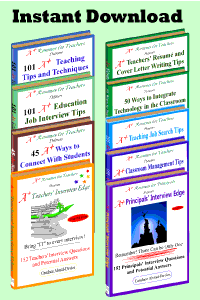The journey from substitute teaching to a full-time elementary teaching position is more than just a job
shift— a career advancement. But how can you make this transition seamlessly? Let’s explore in-
depth.
1. Craft a Compelling Resume:
- Shift Your Perspective: Begin by viewing your substitute teaching experience as a strength. It
provides diverse classroom experiences that many full-time teachers might not have
encountered. - Profile Over Objective: Modern resumes favor a profile or summary over the older objective
format. This section should be a snapshot of your substitute teaching experience, skills, and
what you bring to a full-time role. - Highlight Achievements: Showcase moments where you made a difference as a substitute
teacher. Did you introduce a new teaching technique? Perhaps you managed a challenging
classroom successfully.
2. Master the Art of Networking:
- Engage with the School Community: Regularly attend school events, meetings, and workshops.
This enhances your skills and lets you mingle with potential hiring influencers. - Seek Mentorship: Approach a seasoned teacher or a principal for guidance. Their insights can be
invaluable in navigating the transition. - Stay in the Loop: Be aware of potential openings or shifts within the school. By being proactive
and expressing interest early, you can have an advantage.
3. Get Certified & Stay Updated:
- Know Your State & Requirements: Every state has its certification prerequisites. For instance, in
New York, you’ll need to clear the New York State Assessment of Teaching Skills. - Continuous Learning: Take continuing education at an accredited college. Teaching methods
evolve. Attend workshops, online courses, or seminars to stay updated. A certificate from the
National Board for Professional Teaching Standards can also elevate your qualifications. - Licensing: Ensure you have a valid teaching license. Some states might also recognize licenses
from other territories, so it’s worth checking reciprocity agreements if you are considering a
move.
4. Develop a Proactive Application Strategy:
- Tailored Cover Letters: For each application, craft a unique cover letter. Highlight how your
substitute teaching experiences make you a perfect fit for the role. - Prepare for Interviews: Anticipate questions related to your substitute teaching background.
Frame your answers in a way that showcases the versatility and adaptability you gained from
those experiences. - Follow-up: After interviews, send a thank-you note. It demonstrates your professionalism and
keeps you fresh in the minds of the hiring panel.
5. Stay Adaptable & Open-Minded:
- Diverse Opportunities: Consider roles that might differ slightly from what you initially had
in mind. Sometimes, related positions can serve as stepping stones to your desired role. - Feedback is Gold: If you’re not selected for a position, seek feedback. It can offer insights into
areas of improvement.
In conclusion, while transitioning from substitute to full-time teaching requires effort, it’s a rewarding
journey. With the right strategies, certifications, and mindset, you can confidently step into the next
phase of your teaching career.


